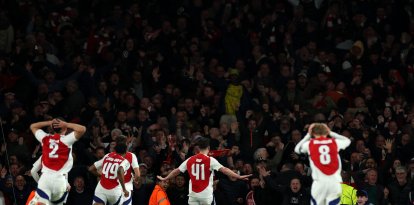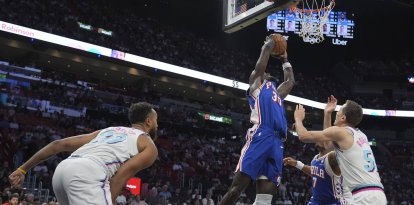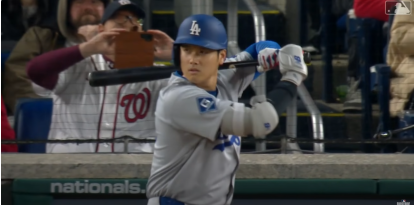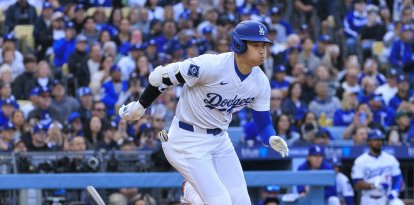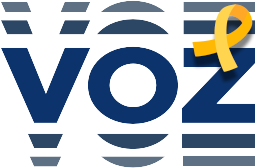Analysis
The end of Brazilian hegemony? Everything you need to know about Copa Libertadores 2025
While the UEFA Champions League now features a new league-style format, the Copa Libertadores continues to uphold tradition, appealing to nostalgia with its classic group-stage structure.
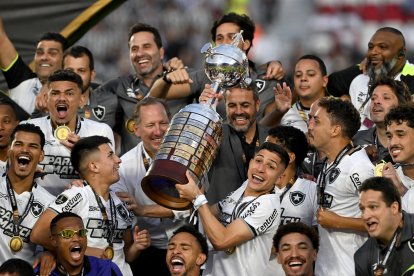
Botafogo is the last Copa Libertadores champion.
Eternal glory—that’s the slogan of the Copa Libertadores de América, the most prestigious club tournament on the continent for the world’s most popular sport, soccer. Year after year, 32 teams battle for a place in history, with the tournament’s iconic trophy engraved with the names of every past champion. On the eve of a new edition, which promises to be one of the most lucrative for participants, here’s what you need to know before settling in to watch the action unfold.
The "Libertadores," as the competition is commonly known, is the most coveted trophy for South American clubs, with teams battling first for qualification and then for the chance to lift the cup. Its viewership, organization, impact, and financial revenue make it the second-most important club competition in soccer, surpassed only by the UEFA Champions League.
The tournament serves as South America's counterpart to the UEFA Champions League and the CONCACAF Champions Cup. It was first held in 1960 under the name American Champions Cup. Peñarol (Uruguay) won the inaugural edition, and after more than sixty tournaments, Independiente (Argentina) holds the record for the most titles, with seven.
The 2025 edition kicked off on Tuesday, April 1, and will run until the end of the year, culminating in a single-match final—continuing the recent trend that contrasts with the tournament’s traditional home-and-away format. The venue for the final has yet to be confirmed.
">😍 ¡Por la #GloriaEterna! Comienza la Fase de Grupos de la CONMEBOL #Libertadores.
— CONMEBOL Libertadores (@Libertadores) April 1, 2025
32 sueños y un solo objetivo: ¿quién será el campeón? 🏆 pic.twitter.com/Dp4tzdNqMX
The traditional format
Despite the UEFA Champions League adopting a new league format, the Copa Libertadores continues to preserve the nostalgia of many with its traditional group-stage format.
The champions and top teams from the previous season's tournaments in each country qualify for the competition, along with the reigning champions of the Copa Libertadores and the Copa Sudamericana, which is considered the continent’s secondary tournament.
Since 2000, 32 teams have qualified for the tournament and are divided into eight groups of four. Prior to that, however, there was an extensive preliminary phase where several teams competed in two-legged playoffs to secure their qualification.
On occasions, this preliminary phase produces incredible feats and shocking moments, such as the elimination of Boca Juniors (Argentina), the most prestigious club in the region, by Alianza Lima (Peru). Another memorable event was the outstanding performance of Barcelona (Ecuador), led by the now-famous and viral coach Segundo Castillo, who knocked out Corinthias (Brazil), a team full of stars.
The qualifiers also featured traditional and historic teams, such as Cerro Porteño (Paraguay), a club that, despite never having won the trophy and facing a complex sporting and institutional situation in recent years, is accustomed to reaching decisive stages and consistently performing well in the tournament.
Once the eight groups are formed, each team will play six matches—three at home and three away—in an effort to qualify for the second round. The top two teams from each group advance to the next phase, the third-place teams move on to the Copa Sudamericana, and the bottom two teams are eliminated from international competition.
The 16 teams that qualify for the second round, or round of 16, will face off in individual matchups determined by a draw, often with sports legends invited to participate. The draw consists of two "bowls": one containing the teams that finished first in their groups, and the other with the runners-up. A top-seeded team will be paired with a second-place team, and they will compete in two matches, one at each stadium. The team that scores the most goals over the two legs will advance to the next round.
In the event of a tie in both matches, the qualification will be defined in a penalty shootout, with no extra time played.
The tournament follows the same format in the quarterfinals and semifinals, leading to the much-anticipated final. The winner of the final will lift the trophy and achieve "eternal glory."
The venue for the final is currently being contested between Brazil and Uruguay, with the Mané Garrincha Stadium in Brasília and El Centenario in Montevideo being the two candidates.
">🤩🔥🏆 ¡Así quedaron definidos los ocho Grupos de la CONMEBOL #Libertadores 2025!#GloriaEterna pic.twitter.com/XfHqysOqmU
— CONMEBOL Libertadores (@Libertadores) March 18, 2025
The main candidates
Of the last eight tournaments, seven were won by Brazilian teams, establishing a clear dominance from 2019 onwards. The defending champion is Botafogo, from Brazil, which defeated Atletico Mineiro in a 100% Brazilian final.
In a surprising turn, this Copa Libertadores will be without the two most successful clubs in the competition's history: Boca Juniors (Argentina) and Independiente (Argentina). As mentioned, El Xeneize was eliminated in the qualifying phase by Alianza Lima, which dealt a heavy blow to the club. On the other hand, El Rojo has had limited participation in recent years, taking part in just seven editions since winning the 1984 Libertadores. Despite the absence of Boca and Independiente, this edition still features 15 teams that have already experienced the glory of lifting the trophy.
This year, the four teams shaping up to be the competition's entertainers are Flamengo (Brazil), Palmeiras (Brazil), River Plate (Argentina), and Racing Club (Argentina).
This ranking was compiled by the statistics company DataFactory, which evaluated the participating teams based on their chances of winning the championship, considering various factors. These included their performance in local leagues and national cups during 2024, their historical record in the Libertadores, and their performance in the previous edition of the tournament.
River Plate
Despite facing a somewhat irregular situation in Argentine soccer, the renowned River Plate, led by Marcelo Gallardo, made a significant financial investment for the tournament and is aiming to reclaim the title after six years.
In preparation for the Copa Libertadores and the mid-year Club World Cup, River Plate made an investment of nearly $36 million—a substantial amount for clubs in Argentina and much of the region, where economic power has not been particularly strong in recent years.
Breaking down the total amount, River Plate spent $7 million on Lucas Martínez Quarta, $5 million on Gonzalo Montiel, $10 million on Sebastián Driussi, and $13.8 million on Kevin Castaño.
Additionally, River Plate acquired Enzo Pérez and Matías Rojas as free agents, and signed Giuliano Galoppo on loan with a $3 million purchase option. River Plate also boasts the second-largest number of active World Cup-winning players in its squad (Armani, Pezzella, Acuña, and Montiel), behind Atlético Madrid, which has players such as Julián Álvarez, de Paul, Ángel Correa, Nahuel Molina, Antoine Griezmann, and Thomas Lemar.
Gallardo has already won two Copa Libertadores titles with River Plate and is aiming for his third in 2025. If he succeeds, he would be just one title behind Carlos Bianchi, the most successful Argentine coach in the competition's history.
Flamengo
Flamengo's powerful squad is complemented by an enviable current situation, largely thanks to their young coach, Filipe Luis. A former player with extensive experience in European soccer and with the Brazilian national team, Luis has brought valuable insight to the team. He has drawn inspiration from one of his key former coaches, Diego Pablo Simeone, who managed him for several years at Atlético de Madrid.
In just six months, the 39-year-old former footballer transformed the team and secured four titles: the Brazilian Cup, Guanabara Cup, Super Cup, and, finally, the Carioca Championship.
is team concedes few goals and rarely loses, with just one defeat in the last 27 matches.
This strong current form is bolstered by a quality squad, featuring stars such as Pedro, Giorgian De Arrascaeta, Danilo, Gerson, Nicolás de la Cruz, Everton, Lorran Agustín Rossi, and Gonzalo Plata.
Palmeiras
One of the most successful teams in recent years is Palmeiras, which combines a strong squad with a coach who has already experienced winning the Copa Libertadores with the club.
To secure their third title, Abel Ferreira invested in two high-profile players: Vitor Roque from FC Barcelona and Paulinho from Atlético Mineiro. Palmeiras spent $25.5 million on Roque and $18 million on Paulinho, making both signings the most expensive in the club's history.
They will join a talented group of players, including Aníbal Moreno, Richard Rios, Mauricio, Felipe Anderson, Gustavo Gómez, Agustín Giay, and Weverton.
Racing Club
The last team is Racing Club de Avellaneda, which recently won the Copa Sudamericana 2024 and the Recopa Sudamericana 2025, defeating Botafogo in the final.
Although Gustavo Costas's team isn't in the best form domestically in Argentine soccer, they have a strong record at the international level, particularly against Brazilian teams. Last year, they defeated Atlético Paranaense, Corinthians, and Cruzeiro in round-robin duels, and they continued this strong performance this year by beating the reigning Copa Libertadores champions. Under Costas, Racing has won seven out of ten matches played against Brazilian teams.
Costas, a natural motivator, has repeatedly expressed his deep desire to win this tournament with Racing, the club he holds dear.
To achieve this, he has one of the most feared attacking duos on the continent, featuring Adrián "Maravilla" Martínez and Maximiliano Salas. They are supported by key players such as Luciano Vietto, Juan Nardoni, Santiago Sosa, Marco Di Cesare, and Gastón Martirena, among others.
La Academia managed to retain almost all of its stars for this competition, with the exceptions of Colombian players Juan Fernando Quintero—one of its top performers last season—and Roger Martínez.
How much money does the Copa Libertadores distribute?
This year, the Copa Libertadores will distribute a total of $225,344,000, which is broken down as follows:
- Group Phase: $ 1,000,000 ($ 330,000 is added per match won)
- Round of 16: $ 1.250.000
- Quarterfinals: $ 1,700,000
- Semifinals: $ 2,300,000
- Finalist: $ 7,000,000
- Champion: $ 24.000.000
With the current state of South American soccer, these are more than interesting prizes for clubs. Even many of them plan their economic year taking into account the expected result in the Copa Libertadores.
"Last year we paid 23 and this year we are going to pay 24 million dollars. We want a strong South American soccer, different, that changes and that is the best soccer in the world," said Conmebol president Alejandro Domínguez.
Is Brazilian hegemony coming to an end?
This is the big question being debated in the region. Over the last five years, Brazilian teams—thanks to the significant economic power of the Brazilian championship compared to other regional tournaments—have built stronger squads and more ambitious sporting projects, leading to a historic hegemony in the Copa Libertadores.
However, unlike in previous years, there is a sense that teams from the region have narrowed the gap with their Brazilian counterparts, winning finals and even defeating them in several knockout rounds.
It is now increasingly common to see teams, not just from Argentina, competing on equal terms with the top Brazilian clubs, with the most recent example being Barcelona of Ecuador.
This, combined with the fact that the top Brazilian contenders are not at their best—except for Flamengo—has inspired non-Brazilian clubs to dream of ending Brazil's winning streak once and for all.
Recommendation
